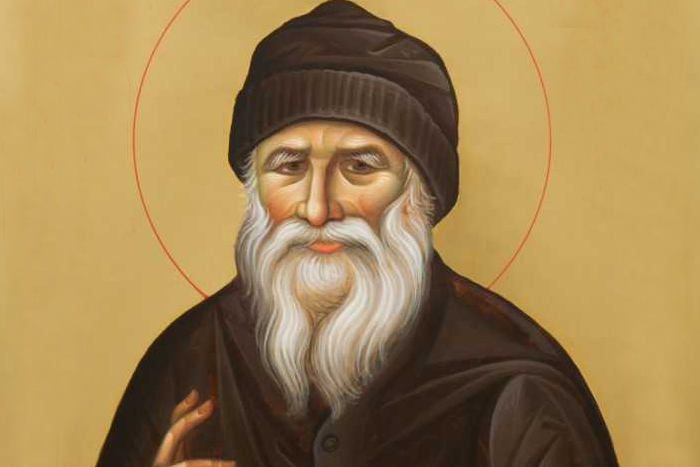
March 1 (13) is the feast day of Venerable John Cassian, a saint who lived in Orthodox Gaul and is known for his ascetic deeds in the West. His spirit however rather resembles an Eastern ascetic. Many have heard of the so-called eight human passions, but few are aware that St John played an important role in systematizing them. Let’s find out more about him.
Ancestry
The place of St John’s birth is uncertain (Abel. 1904). Some speak of him being born and raised in Massalia (modern Marseille in Provence region of France), others claim his hometown to be Athens, while still others believe that he comes from Constantinople or Bethlehem. St Gennadius of Marseille claims that John was “a Scythian by origin” (Gennad. Massil. De script. Eccl. 61), adding weight to the hypothesis about the ascetic’s birth in Scythia Minor (the territory of modern Dobruja in Romania).
The saint was born around 460 into a wealthy family, which from an early age instructed him in Christian piety, developing also his taste for Greco-Roman literature. His mother tongue was Latin, which is probably what gave him his nickname Roman.
St John’s Life in the East
John was approximately 20 years of age when he went to the Holy Land, took monastic vows and settled in Bethlehem. Having become acquainted with the life of a Cenobium, he decides to visit the homeland of monasticism and travels to Egypt. There he visits many ancient monasteries, but his goal is the Egyptian monastic center in the great desert of Scetis (modern Wadi El Natrun). Having arrived there, John learns much from the great Egyptian elders and becomes acquainted with the prayer of the hermits. Soon he joined the community of Abba Paphnutius, who was also presbyter in one of the Scetis churches, where monks from the entire desert gathered for the Eucharist on Saturdays and Sundays (Ioan. Cassian. Collat. 3. 1). Spending many years of his life with experienced teachers, St John was able to accumulate material for his writings on monasticism.
In 400 AD, Pope Theophilus of Alexandria denounced Origen, who was highly revered by the monks of the Al Natron Valley. Soon Theophilus convened a series of councils that condemned Origen and his writings, as well as his many adherents. The decisions of these councils caused disturbance among the monastics throughout Egypt. To enforce these decisions, Theophilus, backed by the authorities, arrived in the Al Natron Valley with a detachment of soldiers and burned the cells of the local ascetics, forcing them to flee from Egypt. About 300 monks were forced to seek refuge in other countries. 50 of them went to Constantinople to appeal to the emperor and to the bishop of the reigning city, embodied at that time in St John Chrysostom (Sozom. Hist. Eccl. VIII 13). It is believed that John Cassian, accompanied by a friend was likely one of these fathers arriving in New Rome.
The New and the Old Rome
St John Chrysostom granted refuge to the exiles, ordaining John a deacon and appointing him the curator of the cathedral treasury. When Chrysostom was sent into exile in 404, Cassian went to Rome to visit St Pope Innocent I with a petition on behalf of the Constantinople citizens to speak in defence of the exiled saint. Arriving in Rome, Cassian provided the Pope with a letter containing an inventory of the patriarchal treasury, confirming the innocence of Chrysostom in financial abuses. Cassian stayed in Rome for about 12 more years and was ordained a presbyter, becoming Innocent’s advisor in relations with the Antiochian Church (Cappuyns. 1949. Col. 1326). In Rome St John developed a good rapport with the future Saint Pope Leo the Great , with whom he then continued to keep in touch.
Eastern Monasticism in Gaul
In 415, St John arrived in Massalia where he founded beautifully organized women’s and men’s monasteries based on the oriental ascetic spirit, applied to local conditions, where monasticism was just taking root.
Disciplined by the strict Egyptian asceticism, St John Cassian enjoyed indisputable authority among the entire South Gaulish episcopate as an experienced spiritual father. Western monasticism was in dire need of guidance when St John, answering the numerous requests, wrote his De Institutis Coenobiorum (About the Rules of Cenobitic Monasteries) containing a set of rules regarding life and prayer of Egyptian fathers; and the Collationes (interviews), which played an important role in the formation of monasticism throughout the West.
The Doctrine of Opposing the Eight Vices
Based on the ascetic tradition of the Egyptian hermits, St John described in detail the reasons for the appearance of sins and outlined a system of struggling with the eight main passions. Many holy Fathers later relied on this teaching of Cassian, in particular St Gregory the Great, in his writings on the 7 deadly sins, and St Benedict of Nursia who also based his Rule on St John’s “Interviews”. Cassian’s work was also used in compiling The Ladder of Divine Ascent by St John Climacus (Ioan. Climacus. Scala. 4).
Controversy with Pelagius and St Augustine
In the course of writing his Collationes, St John not only refuted Pelagianism, but also polemicized with Augustine of Hippo about grace and predestination. As a result of this disagreement Cassian was criticized in the following centuries by Western theologians, accusing him of semi-Pelagianism.
However, in denying predestination to condemnation, his doctrine corresponds to the Orthodox teaching of synergy. St John shows a balance between the unconditional need of a person for saving grace, and the equally important freedom of human will, which is merely sick but not dead, as claimed by St Augustine. According to St John, a person retains an (albeit weak) desire for and knowledge of good, which means that he can respond to the call of Christ and choose the path of light, rather than darkness.
The saint died ca. 435 and was buried in the crypt of St Victor’s monastery that he had himself founded.




